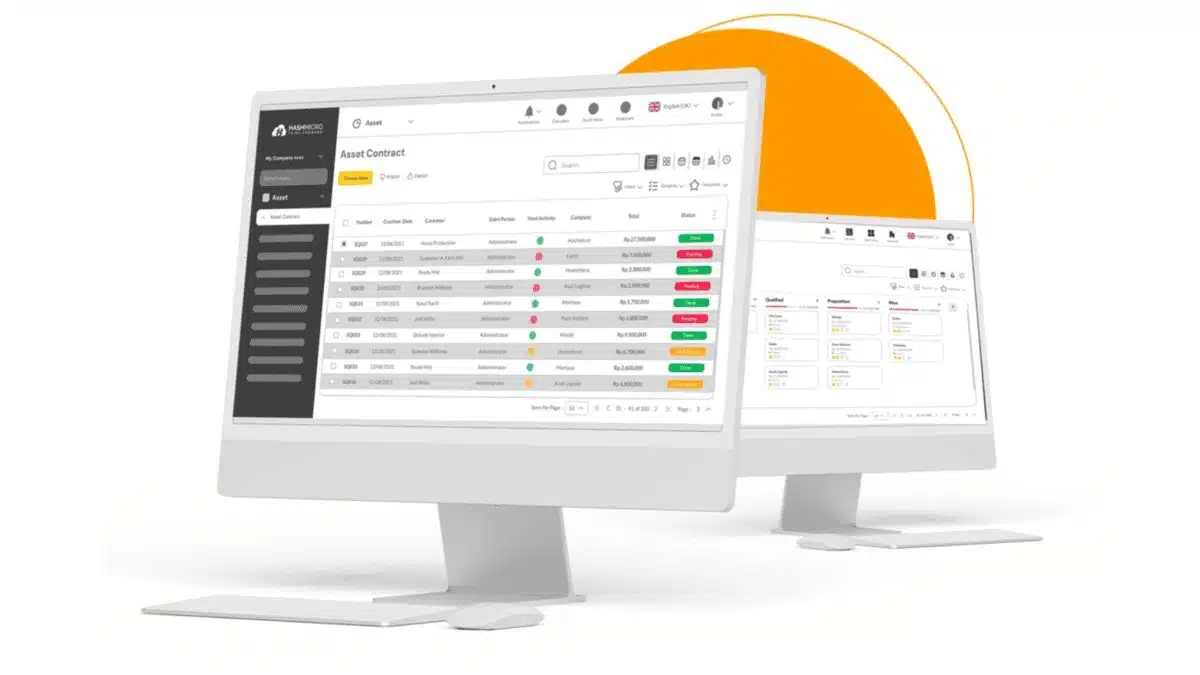Your inventory is chaotic; essential heavy equipment like forklifts, cranes, and excavators are poorly organized and unused. Some machinery has gone missing, and maintenance schedules are overlooked, leaving half of it broken down. Your employees are frantically searching for the equipment needed for a job already running 30 minutes behind.
Sound familiar? Yeah, your asset tracking is screwed! But here’s the good news: it doesn’t have to be. Proper tracking lets you know exactly where your equipment is and when it needs maintenance. An asset management system can keep you updated in real-time, preventing overstocking and ensuring your team has what they need.
No more scrambling or wasting time; every asset is in its place, ready for action. Ready to take control and simplify your business operations? Let’s dive into how asset management software can make this happen. Keep reading!
Key Takeaways
|
Table of Contents

What is Asset Tracking

Asset tracking involves monitoring physical assets’ location, usage, and status using barcodes and RFID. This system is crucial for businesses to ensure their assets are efficiently utilized and well-maintained.
The process is not just about knowing where assets are but also about optimizing their use. By implementing an effective tracking system, businesses can maximize the lifespan and performance of their assets, contributing to overall operational success.
Benefits of Asset Tracking
Asset tracking offers numerous benefits that can transform how businesses manage their operations. By providing real-time data on the location and status of assets, companies can streamline their workflows and reduce downtime. This ensures that the right assets are always available when needed, leading to faster and more informed decision-making.
Some benefits are:
- Real-time Data: Provides up-to-date information on asset location and status, supporting faster and more effective decision-making.
- Enhanced Efficiency: Helps businesses quickly adapt to changes in demand, maintaining efficiency across all departments.
- Cost Reduction: Reduce risks and costs associated with lost or mismanaged assets while extending equipment life through preventive maintenance.
- Risk Management: Ensures compliance with regulations and industry standards, protecting the business from legal issues.
- Comprehensive Visibility: Offers a complete view of all assets, allowing for better allocation, utilization, and inventory control.
By implementing asset tracking, businesses gain control over their resources, preventing theft, loss, and inefficiencies. This system supports smoother operations, minimizes costly mistakes, and enhances productivity.
Asset Tracking Technologies
Technologies have evolved to offer businesses various methods to efficiently monitor and manage their assets. From simple barcode systems to advanced IoT solutions, each technology caters to different tracking needs, improving accuracy and reducing operational costs.
Some of those technologies are:
- Barcode and QR Code Systems: Cost-effective and simple, allowing quick scanning for efficient asset check-in and check-out.
- RFID Technology: Automates tracking with passive/active tags, ideal for high-value assets in complex supply chains.
- GPS Tracking: Provides real-time location for moving assets like vehicles, aiding in delivery and theft recovery.
- Internet of Things (IoT): Enables remote monitoring, gathering performance data, and supports predictive maintenance to reduce downtime.
- Bluetooth and RTLS: Offers precise, real-time tracking in confined spaces like warehouses, ensuring immediate equipment access.
These technologies play a vital role in enhancing asset visibility, management, and security. Implementing the right combination can significantly boost operational efficiency and ensure resources are always optimized for business success.
Asset Tracking Applications by Industry
This system plays a vital role across industries, from logistics to healthcare. In logistics and supply chains, it manages inventory, shipments, and storage, reducing the risk of lost goods and improving forecasting. In construction and manufacturing, it ensures heavy machinery and tools are available and maintained, preventing delays and cutting costs.
Healthcare facilities rely on asset tracking to keep medical equipment operational, enhancing patient care. In education, it manages tech tools for effective learning. Retail businesses use it to keep products in stock and accessible, while government entities ensure transparency and accountability in asset use.
Overcoming Challenges in Asset Management
Integrating new tracking technologies with existing systems can be challenging, especially with legacy systems. Standardization across departments also poses a hurdle in unified fixed asset management, requiring consistent protocols and training.
With the increasing amount of data generated from tracking systems, securing this information becomes crucial. Effective data management practices must be established to protect sensitive information and ensure it is used ethically and legally.
The initial setup and ongoing maintenance of asset tracking software systems can be costly. Moreover, training employees to use these systems effectively is crucial for achieving the desired benefits, necessitating ongoing education and support.
Best Practices for Asset Tracking System

Implementing an effective asset-tracking system requires careful planning and consideration. The right technology should align with the business’s needs, ensuring smooth operations and accurate tracking. Factors like asset type, operating environment, and required tracking detail are crucial in this choice.
Follow these practices:
- Select the Right Technology: Choose technology that fits the business size, asset type, and required level of tracking detail.
- Structured Implementation: Plan, test, and gather feedback to tailor the system to specific business needs and adaptability.
- Essential Features: Opt for software with real-time tracking, seamless integration, scalability, and detailed reporting for efficiency.
- Regular Maintenance: Schedule system checks and updates to ensure continuous, accurate asset tracking and optimal performance.
Following these best practices helps create a robust asset tracking system, enhancing control, efficiency, and adaptability to future business changes.
The Future of Asset Tracking
It lies in the integration of AI and machine learning technologies, which will further enhance the accuracy and predictive capabilities of tracking systems. These advanced technologies will allow businesses to predict maintenance needs, automatically optimize asset allocation, and identify usage patterns to prevent issues before they arise.
Additionally, the increased use of IoT and real-time data analytics will make asset tracking more seamless and dynamic. As technology evolves, it will become more intuitive, using sensors and automated alerts to provide businesses greater control and insight into their operations.
Improve Asset Management with HashMicro’s Asset Tracking Technology

HashMicro’s asset tracking technology offers a robust solution designed to revolutionize asset management for businesses of any size. Its advanced capabilities allow companies to monitor, maintain, and maximize the use of their assets, reducing unnecessary expenses and boosting overall productivity.
By leveraging cutting-edge tracking tools, businesses can achieve full visibility and control, streamlining daily operations and ensuring optimal asset performance.
Some features of HashMicro’s Asset Management Software are:
By implementing HashMicro’s asset tracking technology, companies can eliminate manual processes, reduce errors, and improve overall asset efficiency. This asset management solution safeguards investments and enhances operational agility, positioning businesses for long-term success in a competitive market.
Conclusion
Effective asset tracking is essential for streamlining operations, reducing costs, and enhancing overall business efficiency. The right asset management software can solve issues like lost inventory, breakdowns, and costly delays. It ensures that businesses always have the right assets available when they need them the most.
HashMicro’s asset tracking technology not only offers tools that optimize asset usage but also improves decision-making processes. Furthermore, it provides real-time insights that help businesses maintain control over their resources. Ready to upgrade your asset management strategy? Try our free demo today!
Frequently Asked Questions
-
What is meant by asset tracking?
Asset tracking involves monitoring the location, usage, and status of a business’s physical assets. It helps companies manage asset inventory, equipment, and resources efficiently.
-
How do you track your assets?
Assets are tracked using barcodes, RFID, GPS, and IoT systems. Software solutions provide real-time data, automated monitoring, and detailed reporting for effective asset management.
-
What are the benefits of asset tracking?
Asset tracking reduces losses, improves efficiency, and optimizes asset usage by providing real-time visibility. It also lowers maintenance costs and enhances decision-making with accurate data.





































